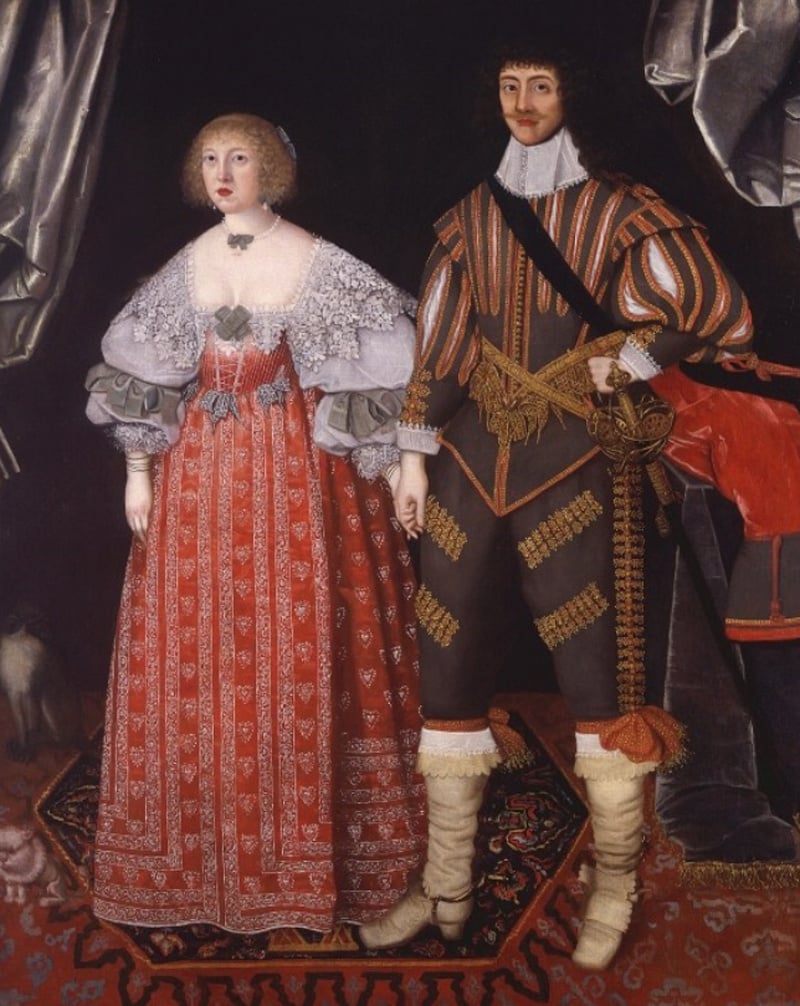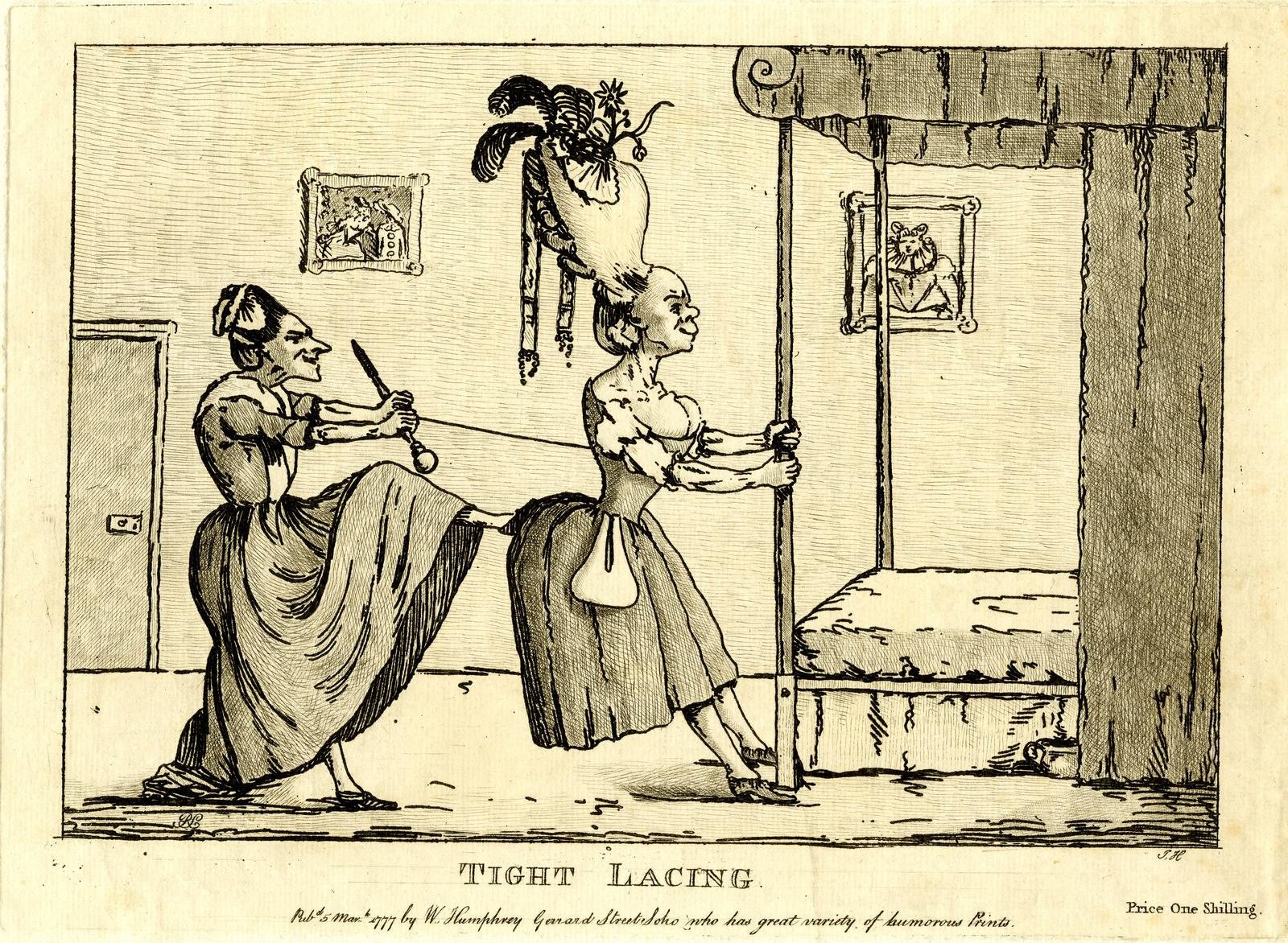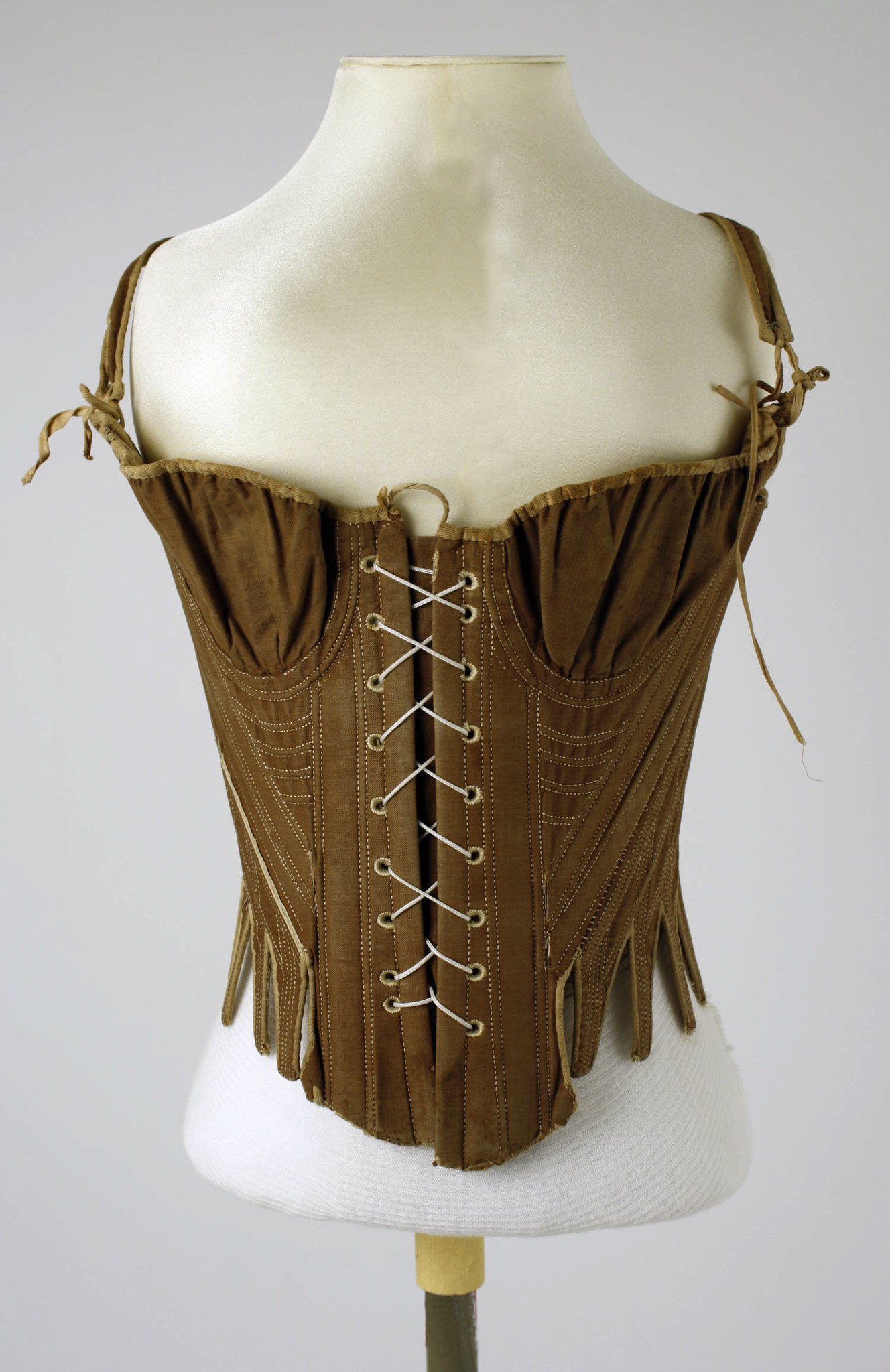
Summer Lee - 06 / Jan / 2023
Corset History II: Stays
What’s one of the things “Queen of Fashion” Marie Antoinette, Catherine I of Russia, and the American Schuyler sisters of Hamilton fame have in common? They all wore stays.

Summer Lee - 06 / Jan / 2023
What’s one of the things “Queen of Fashion” Marie Antoinette, Catherine I of Russia, and the American Schuyler sisters of Hamilton fame have in common? They all wore stays.

Woman's Corset (Stays), English, circa 1730-1740, Los Angeles County Museum of Art M.57.24.1
What’s one of the things “Queen of Fashion” Marie Antoinette, Catherine I of Russia, and the American Schuyler sisters of Hamilton fame have in common? They all wore stays.
Dark Garden Corsetry has specialized in modern corsets for over 30 years, but this represents just a fraction of the history of fashionable corsetry. Historical designs inform modern ones, so we’d like to take you through the story of the corset, focusing today on “stays” as one of its predecessors!
| Unknown artist, Florence Poulett, daughter of John, 1st Lord Poulett, and her husband Thomas Smyth of Long Ashton, Somerset, English, c. 1627 | |||
 |
Our previous post described how “bodies” emerged during the sixteenth century in Europe as foundation garments stiffened with whalebone and often a rigid busk. During the seventeenth century, bodies increasingly occupied an ambiguous place as both underwear and outerwear, as they could also be worn as a bodice. Several surviving examples in museum collections are made with brilliant fabrics and expensive decorations. Some even have sleeves attached, meaning they were not meant to be hidden underneath the wearer’s gown. One example can be seen in Florence Poulett’s wedding portrait, where the stitched boning channels of her bodice are plainly visible. Sometime during the late 17th century, the English term for this type of garment shifted from bodies to “stays.” This was around the same time that the mantua developed as an innovative new style of women’s dress, which in turn gave way to the iconic robe à la française now so emblematic of 18th-century fashion. |
Like bodies, 18th-century stays molded the torso into a conical shape, narrowing the waist and flattening the bust. Numerous finger-like tabs were installed at the waist to more evenly distribute pressure along the hips. (Like our bespoke Baroque corset!) They could be laced at the center-front, center-back, or both, and some had shoulder straps and a busk. In museum collections today, it is common to see both “stitched” stays, where boning channels are visible, and “smooth-covered” stays, where a rich outer layer of colorful silk fabric has been added. Many surviving smooth-covered stays even have a decorative faux stomacher at the center, resembling the triangular stomacher panel used to fill the open space left by fashionable robe-style gowns. The average working-class woman would have worn more practical, less luxurious materials such as linen or even leather.
 |
 |
|
| Women’s Stays (43-inch waist), American, late 18th century, Philadelphia Museum of Art, 1998-162-51a,b | Tight Lacing, English, 1777, The British Museum 1869,1211.56 | |
Stays became ubiquitous during the 18th century, particularly in England, where they became associated with good morality. Going without them could be seen as indecent. At the same time, the extremely artificial silhouette achieved with stays and wide hoop skirts was considered vain by some. It could also be considered deceitful, presenting a slim and youthful form that the wearer didn’t actually possess. The practice of lacing one’s stays extremely tightly was especially subject to ridicule and caricature. In a letter written by Mrs. Delany in 1775, the Englishwoman told her friend that a physician recently declared tight-lacing to be the cause of death for four women. There is no way to verify if this was actually the case, but the claim is indicative of the practice’s reputation for being dangerous. This reputation would continue into the 19th century, and still colors the perception of corsets today. A minority of highly-fashion obsessed men, known as macaronis, possibly also wore stays and participated in tight-lacing.
|
Conical stays went out of fashion by the early 19th century, the age of Jane Austen and the Regency. When the French Revolution rallied against the aristocratic styles of the old regime, high-waisted neoclassical gowns came into fashion. Because the new columnar silhouette emphasized the bustline, not the waist, fashionable stays from the last decade of the 18th century tend to be shorter in length and even feature soft cups for the breasts. However, the transition away from rigid undergarments started as early as the 1770s in France, where it was reported that French women wore an unboned, quilted form of stays called a “corset.” Coming up in the next installation of this blog series, we’ll explore how corsetry briefly disappeared from fashion — then came back stronger than ever in the 19th century. |
|
 |
|
| Corset, American or European, 18th century, The Metropolitan Museum of Art C.I.41.94 |